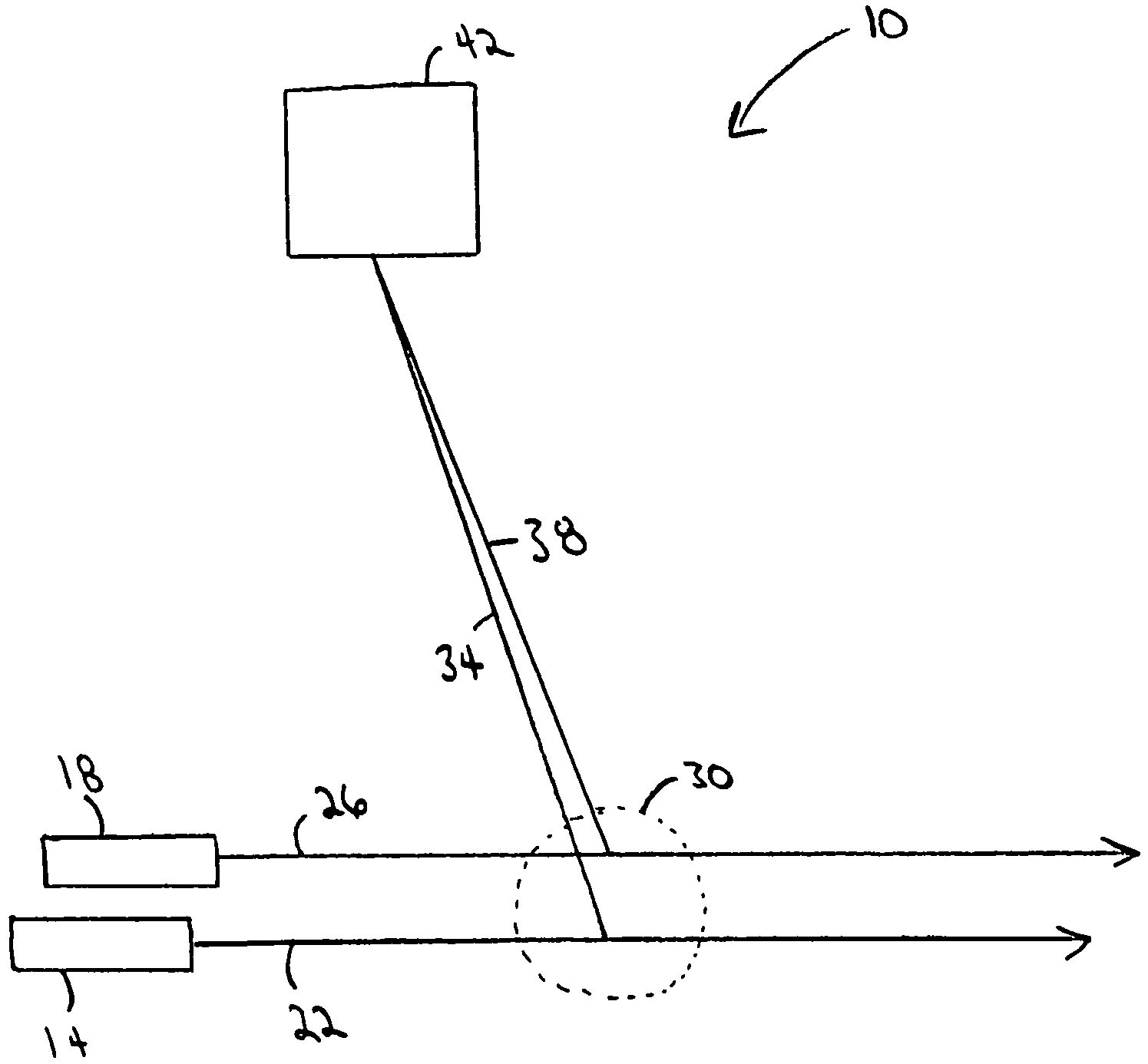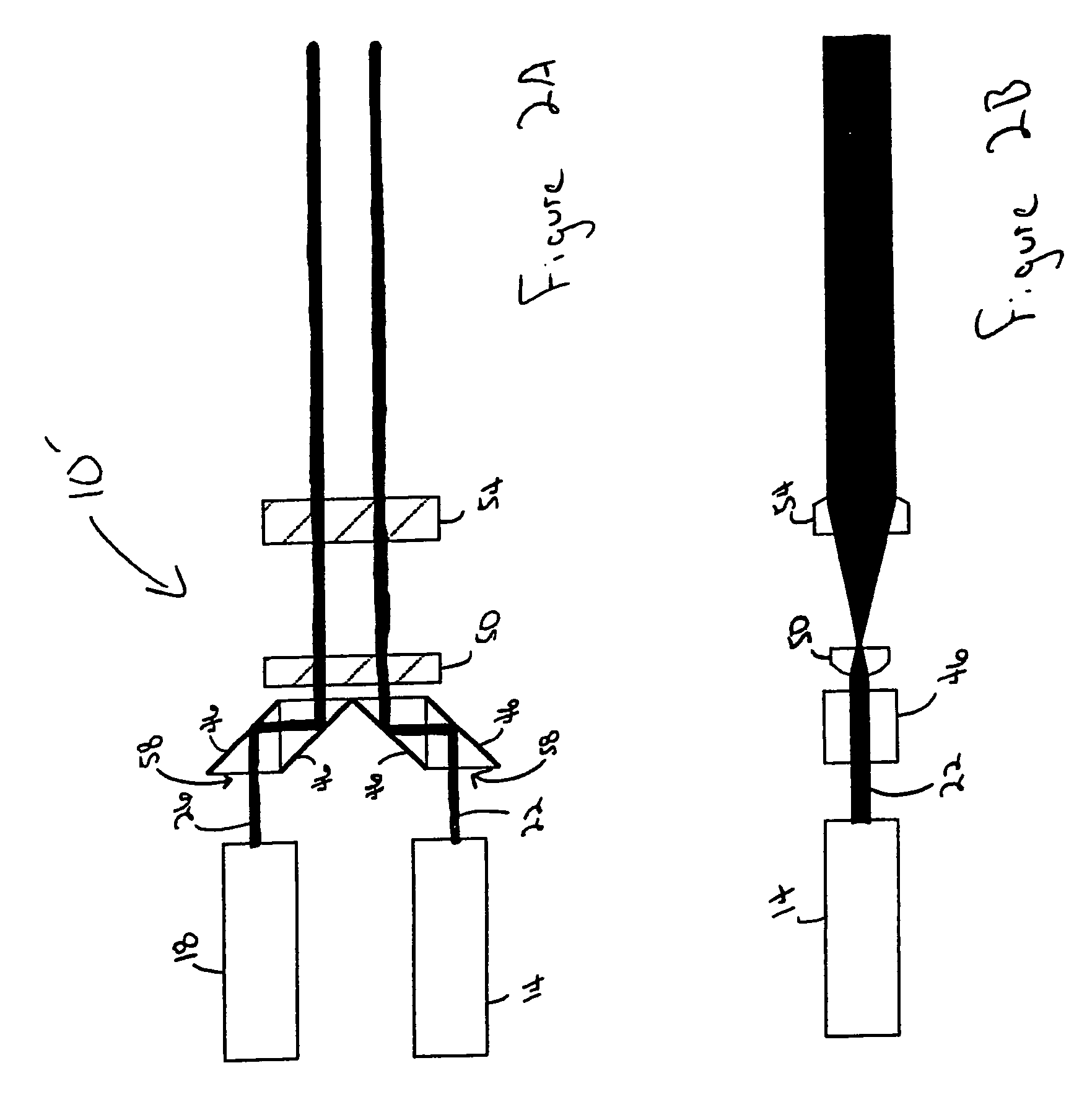Method and apparatus for measuring particle motion using scattered radiation
a technology of scattered radiation and particle motion, which is applied in the direction of reradiation, instruments, devices using optical means, etc., can solve the problems of multiple lasers, multiple detectors and multiple detectors, and the inability of a detection system to resolve the scattered light arising from one radiation source, etc., and achieve the effect of wide scattered signal bandwidth and short period of tim
- Summary
- Abstract
- Description
- Claims
- Application Information
AI Technical Summary
Benefits of technology
Problems solved by technology
Method used
Image
Examples
Embodiment Construction
[0040]FIG. 1 depicts an embodiment of an apparatus 10 for measuring particle motion. The apparatus 10, in use, includes a first source of radiation 14, a second source of radiation 18, a first beam of radiation 22 generated by the first source of radiation 14, a second beam of radiation 26 generated by the second source of radiation 18, an observation region 30 in which particles scatter radiation, a first beam of scattered radiation 34, a second beam of scattered radiation 38, and a detector 42. The two sources 14 and 18 project the two beams of radiation 22 and 26, respectively, in a first direction through a transparent medium. The two beams 22 and 26 are intersected by a particle (not shown) traveling in a second direction. As the particle crosses the first beam of radiation 22 in the observation region 30, it scatters radiation and forms the first beam of scattered radiation 34, which is received by the detector 42. As the particle crosses the second beam of radiation 26 in the...
PUM
| Property | Measurement | Unit |
|---|---|---|
| frequency | aaaaa | aaaaa |
| frequency | aaaaa | aaaaa |
| wavelength | aaaaa | aaaaa |
Abstract
Description
Claims
Application Information
 Login to View More
Login to View More - R&D
- Intellectual Property
- Life Sciences
- Materials
- Tech Scout
- Unparalleled Data Quality
- Higher Quality Content
- 60% Fewer Hallucinations
Browse by: Latest US Patents, China's latest patents, Technical Efficacy Thesaurus, Application Domain, Technology Topic, Popular Technical Reports.
© 2025 PatSnap. All rights reserved.Legal|Privacy policy|Modern Slavery Act Transparency Statement|Sitemap|About US| Contact US: help@patsnap.com



